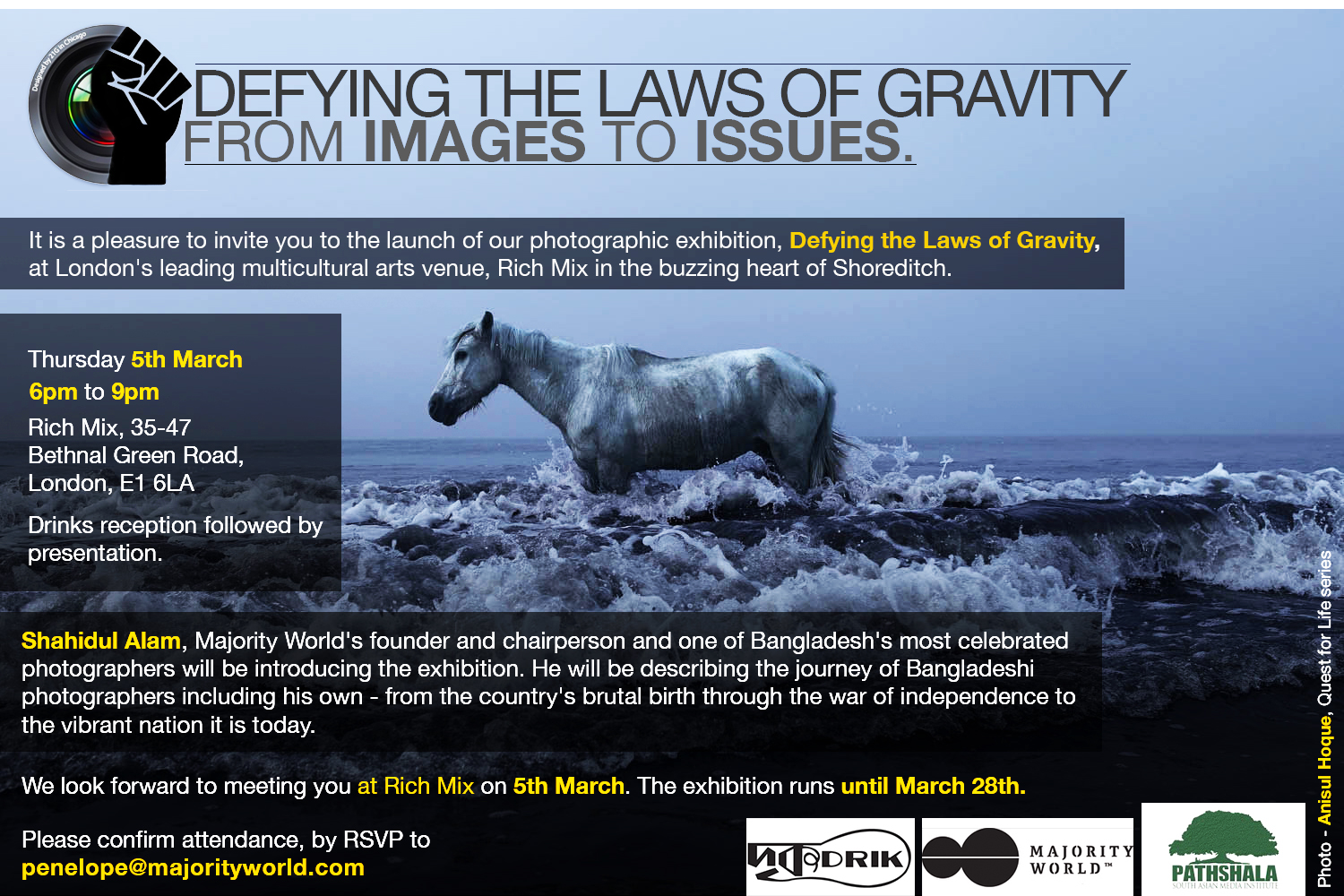??????????????????????????????????? Photographers in Bangladesh 1987 -2014

It?s an unlikely mix. ?The powerful but sage Abir Abdullah,, the protesting activist Taslima Akhter, the quiet and reflective Sarker Protick, the agent provocateur Jannatul Mawa, the deep and other worldly Anisul Hoque, the disturbingly questioning Tushikur Rahman and the visionary Shahidul Alam. Collectively they shape one of the most powerful photographic movements of modern times.
In fifteen years, and with the most rudimentary of equipment, they have taken a hundred square metres of Dhaka as their own and created a vortex of creativity that has shaken the world of photography. The whirlwind around that vortex, fueled by a revolution against injustice, has not only taken on a tired education system steeped in bureaucracy, but also a global and seemingly impenetrable photographic industry hijacked by wealthier nations. They are photo-militants who have learnt to defy the rules of gravity.
The work is remarkable for its range, but is bound by an underlying strand: a belief that the art of photography, cannot, must not, limit itself to the aesthetic alone. The compulsion to address wrong, regardless of the vocabulary of the art, is what holds this wild bunch together. Unlike other schools of thought however, Pathshala has been able to accommodate and thrive on this diversity.?? Freed from the need to conform, unencumbered by role models other than in ethics and philosophy, each artist has found a unique signature, where the greater signature of the school only becomes apparent when one steps back to see the bigger picture. Multicoloured bogies in vastly different guises all on the train to justice.
Alam?s ?Struggle for Democracy?, produced at a time when the concept of a photo story had not been developed, looks at politics not merely in terms of the physical struggle for power, but also in everyday life. Religion, class, gender and militarization are all addressed in a succinct essay produced and exhibited under oppressive military rule. An open letter to the prime minister, incorporated within a visual narrative, formsa window for other practitioners to peep through.
Abir Abdullah, at that time a young recruit at Drik, looks at the war veterans whom the euphoria of victory had left behind. Classic in its approach, it is the tender humanity of his work and his ability to relate to a dream that had shaped a generation before him, which makes the work stand out.
One could walk past Anisul Hoque without seeing him. Quiet, unassuming, almost invisible, Anis is almost like the bonsais that he grows. His work, influenced by the mother that he lost while young, is similarly diminutive, but detailed and laden with symbolism. He is the ultimate sufi photographer.
Taslima Akhter is inseparable from the labour movements she has singled out as her space. It is only fitting that perhaps one of the most iconic images of the decade, was seen through her lens. One that she was perhaps destined for. Typically, she scorned the award ceremony in Amsterdam, to be there with the workers.
Tushikur Rahman draws on his own troubling past to take us to uncomfortable realms. Dark and somber, the work unearths the subject of suicide, a common but taboo subject that middle class sensibility finds difficult to discuss. While it draws us into problematic areas, the work, through his own life, also gives us hope and provides an understanding of youth culture.
Sarker Protick?s delicate imagery floats amongst this heavy cast. The high key images surround their subject, wrapping them in tenderness. While the typical photojournalist photographs events and moments, Protick photographs feelings, his images lovingly brushing themselves across the canvas.
Jannatul Mawa returns us to the essence of documentary photography. She peels back layers of societal veneer and strips bare the relationships of power and class. Embedding herself within that social milieu, she offers images that are understated and unreliant on words, reminding us that the personal is political.
Diverse as they are, there are few courts of Justice that could deny the living, breathing documents, of these powerful witnesses of our times.
The exhibition is part of Freedom Week 2015





Leave a Reply
You must be logged in to post a comment.